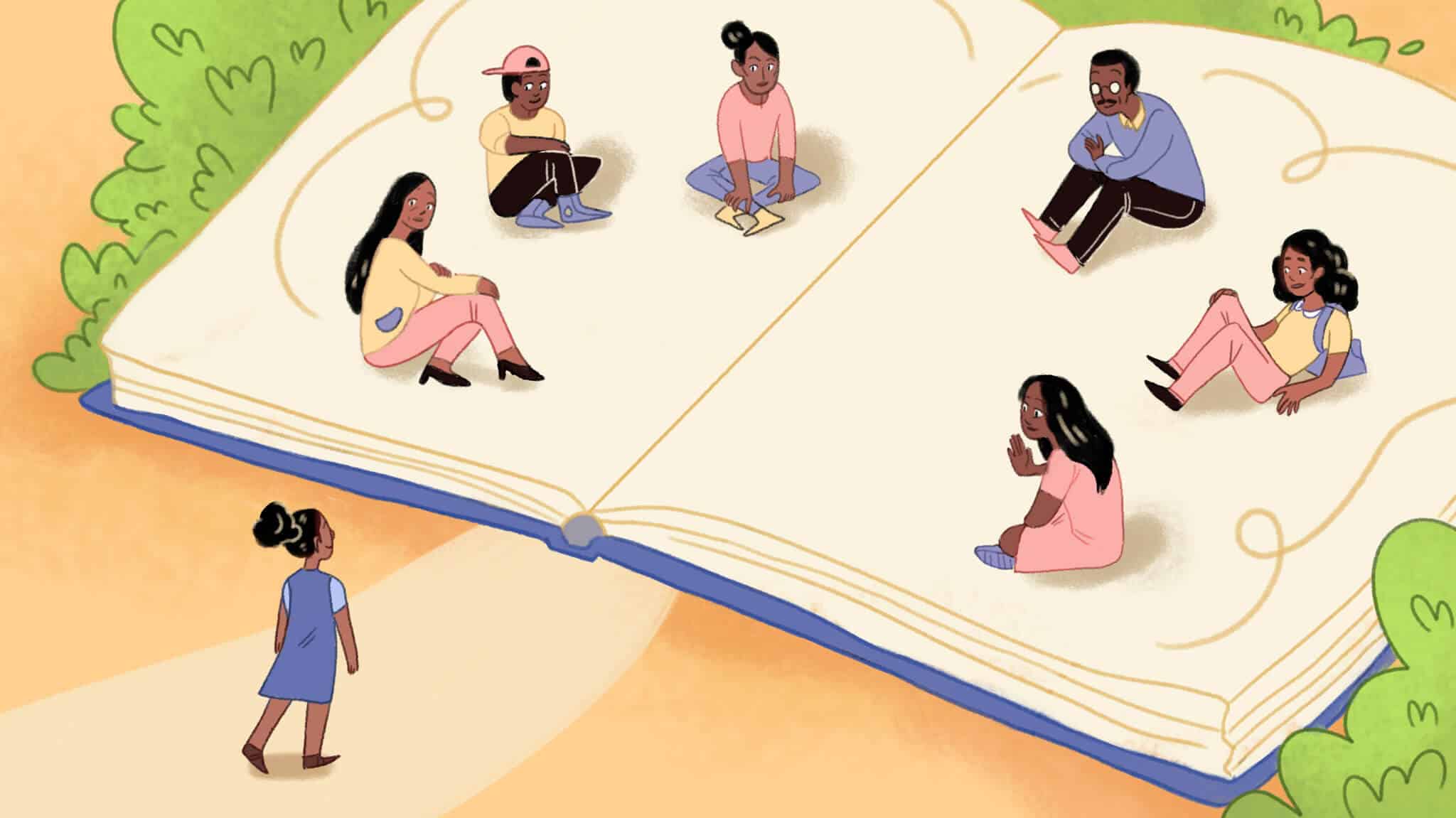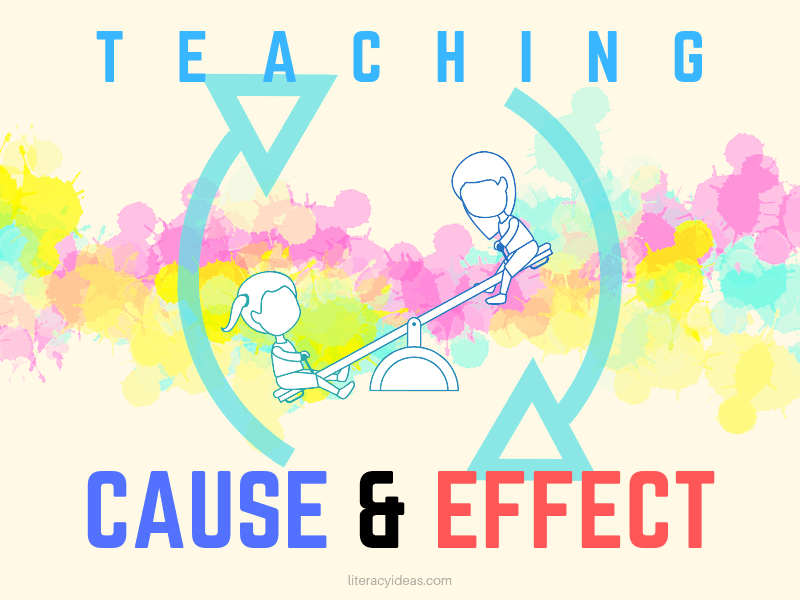
What are the essential narrative writing skills?
Narrative writing demands a lot from our students. It requires them not just to come up with a story worth telling but also to develop the necessary skills to make that story come alive through the written word.
No mean feat when we consider the diverse challenges of creating a compelling narrative within the two dimensions of the printed word.
In this article, we’ll look at some of the most important skills your students will require to excel in narrative writing.
We’ll look at each of these skills in turn.
First, we’ll explore why each skill is important for narrative writing ability.
Then, we’ll suggest an activity or two you can use in the classroom to help your students develop each specific skill.
Narrative writing Skills covered:
- Reading Widely
- Believable Characters
- Cause and Effect
- Effective Dialogue
- Tension
- Themes
- Ending Well
A COMPLETE UNIT ON TEACHING NARRATIVE WRITING
Engaging students in narrative writing exercises offers a myriad of educational and developmental benefits. Firstly, these exercises cultivate creativity by encouraging students to explore their imagination and construct compelling stories. The process of inventing characters, designing plots, and crafting settings foster a creative mindset that extends beyond the confines of writing, influencing problem-solving and critical thinking skills.
Moreover, narrative writing exercises enhance language proficiency. Students refine their vocabulary, experiment with sentence structure, and learn to express complex ideas coherently. As they construct narratives, students naturally improve their communication skills, both written and verbal.
Narrative Writing Skill 1: Reading Widely

This may seem a strange place to start. This article’s about writing skills after all.
Our students’ first experience of the written word is usually through reading. It is through reading well-written texts that they first begin to absorb the rules of language and structure.
After a time, they begin to apply some of the knowledge gained from their reading into their own early attempts at independent writing.
From the early focus on using phonics to decode unfamiliar words to building a diverse and expressive vocabulary, reading is where students begin to develop their writing chops. It’s where they see how it’s done.
Not only can students absorb some of the craft of narrative writing by reading fiction, but reading nonfiction can also serve to enhance their narrative writing too.
Reading nonfiction books helps students to understand the world around them.
This, in turn, helps them to create more plausible fictional worlds as they fill it with details and knowledge drawn from their nonfiction reading.
Suggested Narrative Writing Exercises:
There are many reading strategies to help students to develop higher-level reading skills that will inform their writing of narratives.
It’s impossible to cover everything here, but there are several comprehensive articles on this site-directed specifically at helping students to develop their reading comprehension skills.
However, one simple strategy you can use to assess student understanding of any text is The Retell strategy.
In The Retell, you simply ask the student to retell the story they have just read in their own words.
Obviously, students can’t be expected to recall the entirety of something they’ve read word for word.
Asking them to retell the story forces them to reconstruct the events from memory, put them in order, and express them in their own words. Something they’ll only be able to do if they’ve understood what they’ve read.
Narrative Writing Skill 2: Believable Characters
One of the most common failings, when our students write stories, is to people their fictional worlds with flat characters.
You know the types (or stereotypes!) – A square-jawed hunk who can do no wrong, alongside the helpless damsel in distress waiting to be saved.
Save for writing fairy stories and the like, our students should strive to create believable characters that seem to live and breathe inside the pages of their stories.
To do this effectively our students need to do the following 2 things:
● Create a Backstory
It may not be necessary to share the backstory with their readers, but students should have at least some idea about their main characters’ lives before the events of their narrative.
The backstory goes beyond the details of a physical description. It allows the writer to explore the character’s goals, motivations, and beliefs.
Suggested Narrative Writing Activity:
A simple way to explore a character’s backstory is to have the student write a short biography on the character’s life.
This needn’t be extensive. It could just be in the form of bullet points, for example. The aim here is to provide some depth to the character.
Another effective way to bring depth to a character is for the student to base them on someone famous or someone they know personally.
● Make Characters Complex
The problem with the impeccable hero or defenseless damsel caricatures is that they don’t correspond to what we know of people in real life.
In real life, we are more than a single characteristic.
In one context we can display characteristics of bravery, while another situation may have our knees knocking.
Real people are complex, flawed, and even contradictory at times.
Suggested Narrative Writing Exercises:
The simplest way to create complex characters is to make them flawed.
One way to do this is to give them a vice. This won’t necessarily make the character unlikeable by the reader, instead, it will give the character room for growth.
For this activity, organize the students into groups and ask them to list as many vices as they can e.g. arrogance, envy, anger, etc.
Then, challenge the students to come up with various scenarios where these vices can be turned into virtues.
For example, a young girl is very lazy. Her mother gets sick and needs expensive medical treatment. The young girl loves her mother very much. The young girl begins to work very hard. Through a series of ups and downs, she becomes very successful and wealthy and helps her mother.
Now we’ve got the beginnings of a story!
Narrative Writing Skill 3: Cause & Effect
To avoid a meandering storyline that rambles aimlessly, students should plan out their narrative before they begin.
The essential elements of a story to consider include:
- Exposition
- Problem
- Rising Action
- Climax
- Falling Action
- Resolution
A story is a series of events connected by cause and effect. It is this cause and effect that gives meaning to a story. Readers need to know why each event occurs and how it relates to previous events.
Suggested Narrative Writing Exercises:
A good way to practice cause and effect is to play And Then What?
For this game, organize students into pairs and suggest simple scenarios to them.
For example, A man stands under a tree. He is pacing up and down nervously. He glances at his watch every few seconds.
One student answers the question, “And then what?” by describing what happens next.
When they’ve finished describing the next event, they then ask their partner, “And then what?”.
They repeat this until they’ve worked through the problem, rising action, climax, falling action, and resolution.
Narrative Writing Skill 4: Effective Dialogue

Dialogue can be a fantastic tool and students should learn to use it well.
Beyond the mechanics of structure and punctuation, dialogue should do 3 things:
● Move the story forward
● Reveal character
● Help the reader understand the relationships between characters.
If dialogue doesn’t achieve these 3 things, then it will need revising or deleting entirely.
A common mistake made in dialogue writing is that it goes on too long.
Often, students enjoy writing dialogue but if it is poorly written the reader won’t experience the same level of enjoyment in the reading of it.
To ensure the dialogue is tightly written, students should avoid small talk in their dialogue.
They should also eliminate pointless, long-drawn-out greetings and leave-takings between characters.
They need to get to the point quickly in their dialogue so as not to bore their reader.
It’s also important for students to avoid using dialogue as a means of info-dumping. That is, the Show, Don’t Tell rule is still in effect in dialogue.
Students should avoid the “As you know…” style of crow-barring exposition into the conversation. This makes dialogue sound awkward and unrealistic – this isn’t how people speak.
Dialogue can certainly be used to reveal backstory and character but it must be done subtly.
Suggested Narrative Writing Exercises:
An excellent way for students to assess how authentic their dialogue sounds is for them to read it aloud when they have finished.
Students should pay attention to how their dialogue feels in their mouths when they speak the words.
Do the words come easily or are they stumbling over phrases?
Real speech is natural and flows. If this isn’t the case, things need to be looked at again.
Narrative Writing Skill 5: Tension

Tension in a story is what maintains the reader’s interest and keeps them reading right to the end.
Tension is all about anticipation. It causes an emotional response in the reader as they’re drawn into the lives of the characters and become invested in the outcomes of the story’s plot.
There are several ways students can create tension in their stories, these include:
- Create characters with conflicting goals
- Raise the stakes for the main character
- Give the reader more information than the main character
- Create questions in the reader’s mind.
Suggested Narrative Writing Exercises:
The ticking clock is one-way that tension can be injected into a story. This is where a story’s timeline is compressed by some sort of deadline.
An excellent twist on the ticking clock idea can be seen in the 90’s movie Speed, where Keanu Reeves’ character must maintain a speed above 50 miles per hour to prevent a booby-trapped bus from exploding.
Organize students into groups for this activity. Challenge them to come up with story scenarios that employ a ticking clock strategy to build tension.
Narrative Writing Skill 6: Themes

Well-developed themes help the reader to derive meaning from a story. Unlike in most nonfiction text types, in fiction writing themes are usually stated implicitly.
For students to develop themes in their narrative writing, they’ll first need to secure a firm knowledge of what exactly a theme is.
Theme simply refers to the central idea or main topic that is explored in a story.
Common themes for stories include love, revenge, good vs. evil, redemption, courage, and coming of age.
Students will first need to decide what their story is about, thematically-speaking.
They will then need to develop their thematic statement. If the theme refers to what the story is about, the thematic statement refers to what the writer thinks about it.
The theme is what it’s about, the thematic statement is what it means to the writer.
Suggested Narrative Writing Exercises:
A helpful way for students to begin to understand how to develop themes in their own writing is to get good at identifying them in the work of others.
For this activity, provide the students with a list of well-known fairy tales and fables.
Instruct students to work in groups to identify first the broad theme of each story and then to write a thematic statement expressing the writer’s perspective.
Narrative Writing Skill 7: Ending Well (Conclusions)

Few things can be as frustrating to a reader as an unsatisfying ending. After investing all that time in reading the story, the reader deserves a decent pay-off at the end.
For a student to give themself the best chance to create a satisfying story, they should know the ending from the outset.
This way, every major scene and major event in the story will be informed by a knowledge of the ending yet to come. The story will have drive and direction.
There are lots of competing demands on our attention these days and the ending should justify to the reader the energy they invested in reading the story.
The ending should be well thought out and unrushed. It should be unpredictable, but not absurd.
Ideally, the writer wants the reader to look back over the story and think that they should have seen the ending coming, but didn’t.
Suggested Narrative Writing Exercises:
Organize students into groups and assign each group a well-known story. Traditional tales, myths, fairy tales, and fables would serve well for this activity.
In their groups, students rewrite their story’s ending together.
The challenge here is to create an ending that differs distinctly from the story’s original ending but still makes sense in relation to the preceding events of the story.
Students present their alternative endings to the class and discuss afterward how effective they think the new ending is when compared to the original ending.
Our Narrative Draws to a Close
As with all types of writing, students should take the time to edit and proofread at the end.
This is particularly true with narrative writing as it not only makes high demands on a student’s technical writing skills but also on their creativity and imagination.
With patience and practice, students will develop the necessary narrative skills to spin a tale that will engage a reader from exposition to resolution.
Teaching narrative writing effectively involves guiding students through the process of crafting engaging stories. Here are five key tips for successful narrative writing instruction:
5 Tips for Teaching Narrative Writing
Model the Writing Process:
- Demonstrate the steps involved in crafting a narrative by modelling your writing. Share your thought process, decision-making, and revisions. This provides students with a tangible example of how to approach storytelling.
Provide Clear Guidelines and Rubrics:
- Establish clear expectations for narrative writing assignments. Clearly outline the elements you want students to include, such as well-developed characters, a compelling plot, and descriptive language. Provide a rubric highlighting specific assessment criteria, fostering a better understanding of what constitutes a successful narrative.
Encourage Frequent Peer Review:
- Foster a collaborative learning environment by incorporating peer review sessions. Encourage students to exchange drafts and provide constructive feedback on each other’s work. Peer review enhances the revision process and allows students to learn from each other’s strengths and challenges.
Incorporate Writing Prompts and Exercises:
- Use a variety of writing prompts and exercises to stimulate creativity and critical thinking. These can include character development activities, plot-building exercises, or even group storytelling. Diverse prompts help students explore different aspects of narrative writing, preventing monotony and inspiring varied storytelling styles.
Emphasize the Revision Process:
- Highlight the importance of revision in the writing process. Encourage students to revisit and refine their narratives, focusing on aspects like clarity, coherence, and the incorporation of feedback. By emphasizing revision, students develop a stronger understanding of the iterative nature of writing and the importance of refining their work.
Remember to tailor your teaching approach to the specific needs and skill levels of your students. Creating a supportive and creative environment that values individual expression while providing structured guidance will contribute to the success of your narrative writing instruction.





